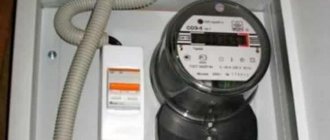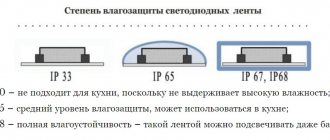A certain amount of power is allocated to any apartment in an apartment building. It limits the possibility of simultaneously connecting several household electrical appliances in an apartment. Dedicated is the power of electricity that is consumed to the maximum simultaneously in the apartment.
If the apartment has gas, then, as a rule, there is no need to increase the allocated power, but if you are forced to use an electric stove, then the limit would be worth increasing. This problem is being dealt with by the management company. Let's take a closer look at how to increase the electrical power per apartment.
What is allocated power
In Soviet times, in most residential buildings, from the moment of design, the norm was 1.5 kW per apartment. These houses are still in use today, but there is not enough power. Later the norm was increased to 3 kW as consumption increased.
Today, 10-16 Ampere plugs are installed in meters, thus limiting the current per apartment to 3 kW. If there is no gas stove, but an electric stove is used, 7 kW is allocated to the apartment.
Modern new buildings emit up to 15 kW. It is worth keeping in mind that in order to meet the limit, you need to enter three phases at once; you may not be able to meet the limit on one phase. Especially if you have to connect an electric stove. As a rule, the allocated power is increased in non-residential premises and in industries, where, indeed, a lot of electricity is consumed.
Let's give a simple example. If a country house is to be heated with an electric or solid fuel boiler, then per 100 m2 you will need a device with a power of up to 10 kW; when using an electric stove, add another 5 kW. The minimum required power is 15 kW for houses and three phases.
To know exactly what the allocated power is in your apartment or house, you need to contact the operating organization (Lenenergo, St. Petersburg Sales Company, Petroelectrosbyt) and obtain the appropriate certificate. It specifies the allocated power and the average value of electricity consumed.
Procedure in non-residential premises
The category of non-residential premises includes areas located on the territory of offices, retail outlets, production workshops and similar facilities. Their owners also have to deal with the lack of power, which is supposed to be allocated according to current standards. With an increase in the fleet of equipment in use (air conditioners, computers and other office equipment), the load on the power grid increases sharply.
The owners of non-residential premises, as a rule, are management companies, so several consumers are often connected to the network at once.
The most reasonable way out of the situation is to increase the power taken from the network by laying a separate power cable in each room. The procedure in this case is somewhat different from that previously discussed for private housing. First you will need to submit an application and prepare documents sent to the network company. The application is drawn up according to the established template. The finished documentation package should contain:
- Plan of a non-residential premises indicating all electrical receivers.
- A copy of the document granting the right to use it.
- An extract from the register of an individual entrepreneur.
- A copy of the charter of the company or organization.
- A copy of the certificate of appointment of the head of the company.
- Personal passport or other equivalent document.
Calculation of required power
The calculation is actually simple. To find out how much electricity is required, you need to add up the power of all appliances that are generally located in the house. For example, boiler - 2 kW, computer 0.4 kW, refrigerator - 1 kW, washing machine - 3 kW, etc.
If it turns out that the power consumption is more than 5 kW, you need to switch to a three-phase network. This way you can distribute the load across phases. Plus, according to the PUE, more than 5 kW cannot be connected to one phase.
You should also know that simply replacing plugs (automatic) with larger ones is prohibited unless the wiring is replaced. It is not recommended to use more than 25 Amperes in a household network with old wiring without cables of the required cross-section. And replacing wires may not provide a guarantee of safety, because in old houses a wire of up to 4 mm2 made of aluminum runs from the panel to the apartments. With increased power, it lights up easily.
So, the power of all appliances in your home is Rust - installed power.
When making calculations, you should also take into account which appliances are operating in the house at the same time. Their power is included in the utilization factor (Kisp). For residential premises it is 0.9.
Thus, the allocated power will be equal to the product of the utilization factor and the installed capacity: Rvyd=Kisp*Rust.
Independent connection to the power grid
Do not connect to AC power yourself. Or increase power consumption without permission. The violator will be forced to pay a fine for illegal use of electricity. In addition to the fine, kilowatts are paid, which are calculated based on the load used. At the same time, it will not be possible to prove that the devices were turned on only for one or several hours. The maximum power of all devices and their operation for the entire period of unauthorized connection are taken into account.
The violator may be disconnected from the source of electricity.
You should not follow advice when they talk about the subsequent legalization of illegal connection to the power line. It is cheaper and more reliable to draw up documents and officially attach all the loads.
Maybe,
How to increase the allocated power to an individual
First, you need to develop a project and obtain technical conditions for it. The design must be created based on GOSTs and the necessary standards for your region. It must be developed by a company that has a license not only for design activities, but also for electrical installation work, since the designer must participate in the arrangement of new wiring.
The following package must be collected as documents:
- Certificate of allocated power;
- Certificate of ownership;
- The act of delimiting balance sheet ownership (taken from the HOA); Apartment plan.
Based on this information, a project will be developed, which must be agreed upon with the energy supply organization. After collecting all the documentation, the installation is tested and checked for compliance with the design made. If in fact the object does not comply, it must be modified or the project replaced with a new one.
Read more: How many fishing students can there be?
If everything is in order, an approval certificate is drawn up, which is issued by energy supervision. Having received all the permits, you can take the documents to the energy supply organization, which will connect the necessary power or increase the allocated one.
Summarize. To increase power in an apartment, you must go through the following steps:
- Get technical specifications;
- Develop and approve the project;
- Check settings;
- Draw up an admission certificate;
- Submit documents to the energy supply organization;
- Conclude a new agreement.
In addition to the cost of connecting additional power, the costs will include replacing wiring, circuit breakers, changing the wiring diagram (not necessary), drawing up a project, cable installation services, replacing a meter, etc.
They can not connect increased power only if there is no technical possibility. If the transformer is overloaded and it is not possible to find free power close to the building.
Our company’s specialists will help you resolve your problems in the shortest possible time. Many years of experience and knowledge of our employees allow us to solve the most complex design problems.
We guarantee: Low prices, Minimum terms, Reliability and Professionalism.
To increase the level of comfort in an apartment, you first need to reach the required amount of allocated power per apartment. You can understand this value by calculating the power based on the selected equipment. Almost always, an apartment is equipped with a single-phase input, but powerful modern equipment requires a three-phase input. Finally, it is necessary to obtain the missing power, put the new electrical installation of the apartment into operation and apply voltage. All these issues can be solved, but require a serious systematic approach. The first thing you need to do is contact the operating organization (MC, HOA, DEZ), get a certificate about the amount of power allocated to the apartment and find out the possibility of increasing the power . Any options are possible, but almost always the power is there, but you have to pay for it. In new houses, a reserve for sale is specially laid down during construction; in old houses, this is ensured by a safety margin from Soviet times. The cost of increasing power will be determined as a result of negotiations with the operating organization, while it must be taken into account that the consumer does not have receive additional power You should not quarrel with the operating organization, as it may simply refuse you, citing disagreement with using its network or charging an exorbitantly high price. You must understand that the electrical network of your apartment is connected to the electrical network of another balance holder (MC, HOA, DEZ), which has every right to refuse you additional use of its network and not give you a new connection point to its network. Unfortunately, it is almost impossible to connect an apartment directly to the network of the electric grid company (to a transformer substation or input device), since this is extremely expensive and difficult due to the small amount of connected power. Having received the consent of the operating organization, it is necessary to conclude a purchase and sale agreement for electric power and obtain permission to connect the power to the networks of the electric grid company. A three-phase input must be specified in the power connection permit if you expect to connect three-phase equipment. According to the new laws, the cost of obtaining power under a power purchase and sale agreement is negligible for household consumers up to 15 kilowatts. Power over 15 kilowatts is paid at high tariffs for legal entities. It is advisable to agree with the operating organization so that the point of connection of the new power is as close as possible to the apartment (in the riser on the landing). This will save money when laying a new cable line. In the worst case, you will have to run a new cable line to the ASU of the building, which may be located in the basement of another entrance. If you have permission to connect and have completed work on supplying additional power, the energy sales company will enter into a new power supply contract with you without additional conditions. A power supply project is not required in this case. The only condition of the energy sales company is the availability of the required electricity meter. If you have special knowledge, it is possible to independently complete the paper part of this set of works, but in any case, for the apartment owner, the results of the negotiations will be much worse in monetary terms than for intermediary organizations. It is more profitable to entrust the entire complex of work to one authorized organization and receive a discount for the complex of work.
© All materials are protected by the Russian Federation copyright law and the Civil Code of the Russian Federation. Full copying is prohibited without permission from the resource administration. Partial copying is permitted with a direct link to the source. Author of the article: team of engineers from OJSC Energetik LTD
Read more: How is exemption from physical education written on the certificate?
From 9:30 to 17:30 (Mon-Fri) Telephone for consultations/02 Our office: 117513, Leninsky Prospekt 121/1 building 2
After purchasing a home on the secondary real estate market, first of all, new owners, as a rule, change the wiring. In the process, it turns out that replacing the input circuit breaker is not so simple. If to install a model of the same type it is enough to call the electricians of the company providing the services, then to connect an AV with a large rated current, you need to submit an application so that the allocated electrical power is increased. Detailed information on this issue is provided below.
Power up for home
So, you've finally purchased an outdoor Jacuzzi pool... or an electric sauna... or even just a new powerful instantaneous water heater. The contractor installed it, did an honest test run and left. Everything is fine!
But the first time it turns on independently, and “for some reason” the 9-kilowatt sauna knocks out the input machine. And then you remember that you only have 9-10 kW for your home, and you begin to understand that a sauna turned on “to check” during the day is one thing, but working simultaneously with light, TV, and oven in the evening is something completely different.
The situation is quite realistic. Solutions are different:
- traditional "conciliation"
- engineering “cheap and cheerful” - Relay
- engineering thorough – Inverter
Traditional way to increase power
The standard solution is to increase the power allocated by the electrical networks to the home. The official tariff for additional kilowatts, thanks to the new (from 2009) “Rules of non-discriminatory access...” is small, if you do not claim a power of more than 15 kW.
However, the procedure for obtaining permission to increase power is lengthy, requiring paperwork and going through the authorities. In addition, it is often simply impossible to allocate additional power because the capacity of the energy infrastructure is physically exhausted.
Yes, the “Non-Discriminatory Access Rules...” prohibit a network company from refusing applicants for a new connection. But it is not prohibited to refuse to increase power to those already connected. Therefore, the approval of additional capacity in each case is very individual, and it is difficult to assess in advance how much the real costs will exceed the official tariff.
We offer the service Permit for additional power on a turnkey basis, as well as the service Estimation of the cost of increasing power for your case.
up
Engineering “cheap and cheerful” - Priority relay
Advanced DIYers know a device that “cancels” the knocking out of the input machine on the electrical panel when several powerful electrical appliances are turned on at the same time. This device is a priority load relay. Price - from 3 (domestic) to 8 thousand rubles (produced by ABB).
Of course, the relay cannot provide additional power. The relay simply turns off part of the load when the power begins to exceed a preset limit. That is, the machine partially “knocks out.” But only for non-priority loads, and not for the entire house. Moreover, when consumption decreases, the relay itself restores power to the non-priority load. There is no need to manually enable anything.
Example - we select one of the sauna heating elements as a non-priority load. Let's say the sauna is heating up, and at this time a powerful kettle or microwave is turned on in the kitchen. The relay instantly turns off the “non-priority” heater, and after a few minutes, when the kettle boils/the microwave turns off, it returns power.
Unfortunately, the method is not universal - not everything can be turned off “in parts”.
up
Engineering thorough - Inverter
The priority relay cannot provide additional energy, but the Inverter can provide it. Together, the Inverter and the Priority Relay technically solve the problem of quickly increasing the available power - without any approvals or administrative red tape.
Energy is accumulated in batteries (at night, when the consumption of other devices is minimal), and during peak load hours, when the allocated power limit is exceeded, the Relay connects the Inverter to the case as an additional source of power. The amount of added power and duration of operation depends on the configuration of the Inverter backup power supply system (number of batteries and inverter power). After reducing consumption to the permitted level, the Relay-Inverter system switches to normal operation from an external power supply.
With Outback Power inverter systems, you can “add” 2 to 30 additional kW of power to your home.
Of course, a high-quality technical solution based on an Inverter has a fairly significant price - 50-60 thousand rubles. for additional kW from the Inverter and batteries. And if the Inverter only provided an increase in power, it would only be beneficial to commercial organizations. Because in the city the alternative is 60-100 thousand rubles. for an additional kW from Electric Grids (and it’s not a fact that they will give it).
But the Inverter is, first of all, a backup power supply system that will work even when the external power supply is completely disconnected. Therefore, a private buyer receives from the Inverter both additional kilowatts of power and uninterrupted power supply for the home.
We will do all the calculations for increasing power to suit your requirements for you
up
What is “dedicated electrical power”?
If we explain the meaning of this term in simple language, then the allocated (or permitted) power is the maximum permissible load on the consumer’s network. It is established in accordance with current standards and is indicated in the electricity supply contract.
Those who want to understand this issue in detail should have an idea of connected, installed, one-time and permitted capacity. Let's give a brief definition of each of them:
- Connected , this term means the total installed power of all electrical receivers powered from the consumer's network.
- Installed - rated active power specified in the technical documentation for electrical equipment, that is, that at which consumer devices will operate in normal mode.
- One-time – the estimated amount of power consumption of electrical installation equipment for a certain time.
- Allocated (allowed) – the maximum one-time power that a consumer can connect to the energy supply company’s network. This parameter is indicated in the specifications for connecting energy-receiving facilities and in the agreement between the consumer and the organization supplying electricity.
Arrangement of EPU
Ensuring a three-phase connection of a country house with 15 kW will allow compliance with all stages of arrangement of the electrical control unit. Initially, you should prepare a plan for the location of the EPU, which should reflect the main elements:
- objects connected to the network (residential building and others);
- position of electrical objects (electricity pole on the site, power lines, transformer box);
- boundaries of the site according to the cadastral plan;
- area of the electrified facility.
The execution stage takes into account all electrical installation work that is prescribed by the technical specifications (affecting applicants and the electrical network). In accordance with the standard scheme for connecting to energy networks, the general electrification algorithm is determined.
Applicants must bear not only balance sheet, but also operational responsibility within the boundaries of their site. The network organization bears such responsibility strictly beyond the boundaries of the applicant’s territory, unless otherwise agreed in the concluded contract.
To connect electricity to a dacha or a private household, all requirements relating to the implementation of specifications, as well as the applicant’s power receiving devices (EPD), are checked.
Connection points cannot be located further than 25 m from the boundaries of the territory with the applicants’ facilities.
It is important to comply with a number of requirements, including
- installation of a pipe stand with a shield,
- selection of an electricity consumption meter,
- ASU and
- RCD.
Typical design of a transformer substation with an electrical panel outside the boundaries of the site
The best option for devices used when connecting 15 kW electricity:
- parapet pipe stand with mounting feet and a toe ring in the upper part;
- three-phase three-tariff electricity meter 25 A;
- input and distribution devices;
- distribution (steel) panel for connecting 15 kW;
- device that performs protective shutdown;
- lightning protection (special arresters, lightning arresters and stabilizers);
- electrical wire (cable) for connecting 15 kW (4-6 sq. mm).
Grounding and resistance measurements, as well as other operational measurements in accordance with the Technical Operation Rules (PTEEP), can be carried out by the design organization.
Option for running the cable into the house from the underground switchboard
Only after all requirements regarding preparation for connection have been met, a representative of the network company goes to the site. If there are no complaints about the work performed, documents on technological connection are signed.
What are the dangers of exceeding the permitted power?
Currently, when it detects that the maximum load has been exceeded, the electric company introduces a consumption limitation mode. The basis for this is a violation of the obligations specified in the energy supply agreement. As a rule, limiting consumption is turning off the electric current. The algorithm for sending such a notification is shown in the figure.
Example of a consumer notice
After 10 days after sending the notice, the company disconnects the power supply. To avoid this, the consumer must eliminate the violation within ten days, and then contact the service provider to draw up the appropriate report. Electricity supply will be restored after the electric company pays the penalty in accordance with the contract.
More serious consequences may arise if, in addition to violating the amount of allocated energy, an accusation of uncontrolled electricity consumption is brought forward. The basis for this will be the removal of seals from the input machine. You can get more detailed information about the consequences of uncontrolled electricity consumption, electricity metering rules, etc. on our website.
Seal on the introductory machine (marked in red)
Rules and regulations
Electrification of any facility is carried out in accordance with the specifications developed by the company providing electricity supply services. One of the paragraphs of this document indicates the parameters of allocated power for the consumer network. The energy supply company forms technical specifications based on the declared capacity, justified by calculations.
When electrifying residential and public buildings, they are guided by SP 31 110 2003 and temporary instructions PM 2696 01. According to these documents, residential buildings belonging to the 1st category are not standardized in terms of power allocation. That is, if there is a technical possibility, then the technical specifications for connecting such facilities are formed on the basis of the submitted application.
For residential buildings of the 2nd category, two electrification standards are provided:
- 5 - 7 kW, for a private house or apartment, with gas stoves.
- 8 – 11 kW – with electric stoves.
At the same time, the lower threshold for power allocation is provided for small-sized apartments in houses built under the social housing program. Note that these standards were established relatively recently; for electrical installations of residential buildings built before 2006, they were lower.
What provides a preferential connection tariff?
By paying 550 rubles, you receive electricity in the lowest reliability category. There are three warranty levels in total:
- The highest level ensures continuous power supply to hospitals and enterprises with a continuous technological cycle. Such consumers are powered from at least two substations.
- The second category includes food industry factories, institutes, and medical institutions. They are connected to two substations, and the guarantee of energy supply is lower than in the first case.
- The remaining consumers are powered from one substation. In the event of an accident, they provide themselves with energy from gas generators or batteries.
For private houses there is no possibility of supplying electricity with a high degree of supply reliability. But you can buy a generator or an uninterruptible power supply unit.
When it is not possible to use the 550 rubles tariff
A preferential tariff is not issued if:
- The site from the substation is located further than 300 m in the city, 500 m in the countryside.
- The consumer has already obtained a connection to power lines in this municipal district for the past three years.
- Power over 15 kW
In the listed cases, the amount for connecting to electrical networks will be greater than the considered tariff.
How do you know how much power is allocated?
Those who do not know the amount of permitted power for a house or apartment can use the following ways to obtain information:
- Get a certificate from the energy supply company. It should be taken into account that such a service is considered paid; for example, at Mosenergosbyt you will have to pay from 1.3 to 3.1 thousand rubles for it, depending on the category of the residential property.
- Look for the required parameter in the energy supply contract or technical specifications.
- Obtain information empirically by looking at the parameters of the input protective device. The fact is that in most cases, in addition to its direct functions, it plays the role of a power limiter. To set its maximum value, it is enough to find out the operating current of the machine.
Read more: Second pension for disabled people due to war injury
Operating current parameters (marked in red)
The figure shows a diffautomatic machine with an operating current of 32 A (Inom). Therefore, the maximum permissible load power can be calculated using the formula: Pmax = U x Inom x 0.8; where U is the rated network voltage. Therefore, 230 x 32 x 0.8 ≈ 5.5 kW.
Of all the options presented, the most reliable is the first, especially since a certificate will still be needed if you plan to increase the allocated power (it is included in the package of necessary documents).
Calculations based on the operating current of the input circuit breaker should not be trusted too much. Some models of modern electronic meters have a built-in load relay. In such cases, the rated current of the machine may be overestimated.
Calculation of required power
This calculation will be needed to understand whether the amount of allocated electrical power for an apartment or house will be sufficient. To do this, you will need to calculate the maximum load by summing up the corresponding parameters of all consumer electrical installations. Moreover, it is necessary to take into account all household electrical appliances that can be turned on at the same time.
As a rule, all the necessary information is indicated on a sticker affixed to the equipment body or is given in the documentation. If the sticker has become unreadable and the technical data sheet has been lost, you can use the table that shows the typical active power of household equipment.
Table of approximate power consumption of various household appliances
Having calculated the total consumption, do not rush to consider the work completed; it is necessary to add a reserve, taking into account a possible increase in load over time. As a rule, the size of the reserve is set at 20-30% of the calculated parameters.
By adding these two values, we get a result that can be compared with the allowed power. If it turns out to be less than the calculated load, it makes sense to think about applying for an additional 1 kW or 3 kW. Details about adding additional kilowatts will be discussed below.
Refrigerator: how many watts does it consume per hour?
When answering the question of which electrical appliances consume the most energy, the refrigerator will be first on the list. This device works around the clock. The actual energy consumption of the refrigerator is calculated taking into account the international classification of energy efficiency devices. This parameter is designated by a letter with a certain number of pluses; the more there are, the lower the level of electricity use.
The classification of a household appliance by energy efficiency is as follows:
- A++ - the highest class with maximum energy saving. Electricity consumption is 30% of the standard value;
- A+ - energy consumption - 30-42% of the standard;
- A - energy consumption - 42-55% of the standard;
- B - energy consumption - 55-75% of the standard;
- C – energy consumption – 75-90% of the standard;
- D – energy consumption – 90-100% of the standard;
- E - energy consumption - 100-110% of the standard;
- F - energy consumption - 110-125% of the standard.
However, the energy efficiency parameter is very average. Since the amount of electricity consumed by the refrigerator is affected by its operating mode, workload, and the number of door openings.
The refrigerator consumes the largest amount of energy among all electrical appliances. Note! The instructions for the refrigerator indicate the energy efficiency class and the amount of electricity it consumes per hour.
Annual energy consumption corresponds to 220-460 kW. It is impossible to obtain an accurate result for a table of electricity consumption per day or month by simply dividing this value. Since energy consumption is influenced by a number of factors, such as freezing power, ambient temperature, and product filling level.
To reduce the energy consumption of the refrigerator, it is necessary to operate the device correctly, do not leave the internal space empty when it is turned on, do not open the door for a long time, do not put hot food in, check the condition of the seals, ensure that there is a gap between the refrigerator and the wall, regularly defrost, wash and dry the unit.
How to increase the allocated power?
Unfortunately, electrical energy consumption standards do not keep pace with the growth of active load. More and more household energy-receiving devices are appearing in residential premises, the simultaneous operation of which triggers the thermal protection of the input AV. There are only two ways out of this situation:
- Reduce household consumption by refusing to operate a piece of equipment at a time, which may cause some discomfort.
- Contact your electricity supplier for additional capacity.
Since consuming less electricity is not an option, the last option is the most rational. Let's consider how to increase the amount of electricity for individuals and legal entities. Let's start with the first ones.
For a private person
The algorithm of actions can be divided into the following stages:
- Preparation of necessary documents.
- Drawing up a project for the electrification of a residential building.
- The process of coordinating the developed project with the company providing services regarding the possibility of technological connection or increasing electrical power.
- Approval of the project by the local Energonadzor authority.
- Inspection of the electrical installation, followed by drawing up a corresponding report and approval certificate confirming the readiness of the facility for operation under new conditions of power supply to power-receiving installations. The report is drawn up by an employee of the electric company, and the approval certificate is drawn up by a representative of Energonadzor.
- The completed documents are sent to the electric company, after which it increases the permissible load (power allocated).
Now we list the package of necessary documents; they are almost identical to those needed when connecting electricity:
- Documents of the owner of a residential building confirming his identity and rights to real estate.
- Help indicating the current value of the electrical load. As mentioned above, it must be obtained from the electricity supply company.
- An agreement with a service provider, which specifies the cost of electricity and the current volume of its consumption.
- The act of delineating operational responsibilities.
Fragment of a standard act of delineation of book value - Floor plan and electrification project. If you order it, you will have to pay about $200 – $1000 for it.
As a rule, the company developing the project simultaneously offers services for its implementation. In some cases, it makes sense to use their help so as not to waste time.
Ways to increase the power supply capacity of a private home
There are three ways that will allow you to use more electrical power in a private home:
- Increasing capacity by submitting an application to the network company. To do this, you need to collect a package of documents and draw up an application according to the established template. If the requested power does not exceed 15 kW, then the cost of the measures will be 550 rubles.
- Setting the priority relay. It won't actually increase power. However, using the device will allow you to distribute it correctly. The principle of operation of the relay is quite simple. If the existing power is exceeded, it turns off equipment that is not a priority.
- Installing the inverter. The device accumulates power during periods when practically no electricity is consumed. For example, at night. Having accumulated a certain power reserve, the inverter turns on during peak load periods.
The choice of the most suitable option for increasing power depends on the capabilities, wishes and requirements of the home owner.










